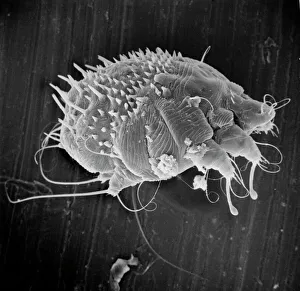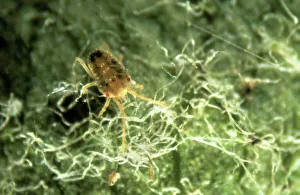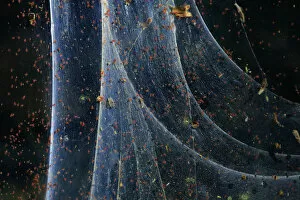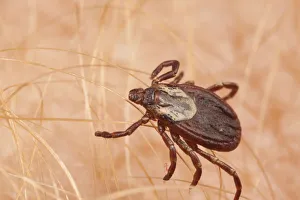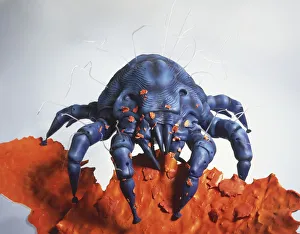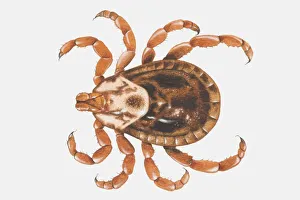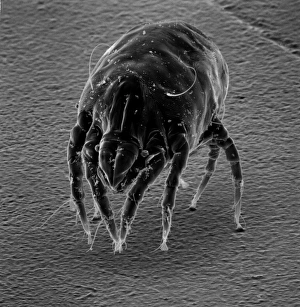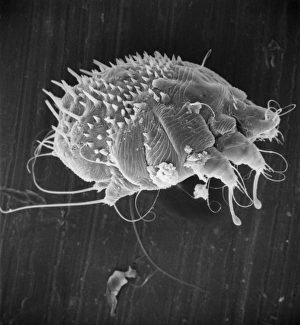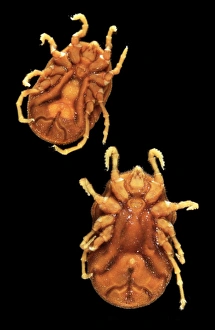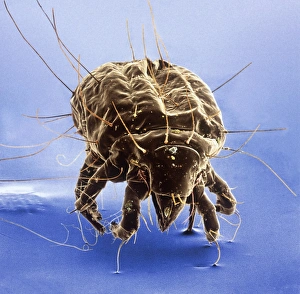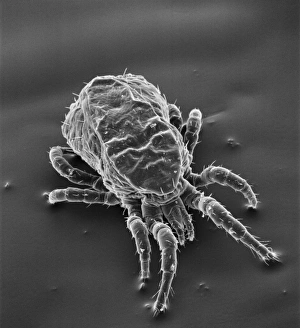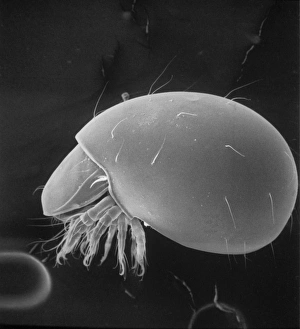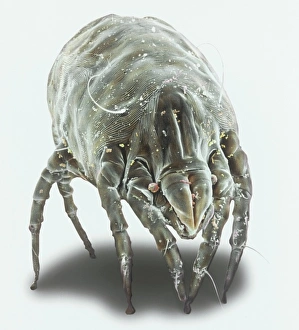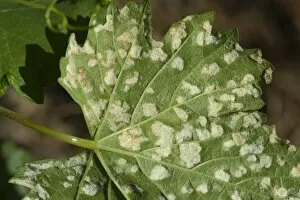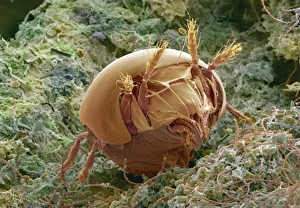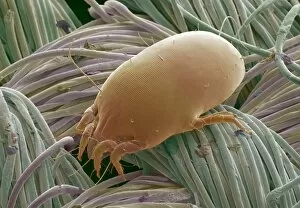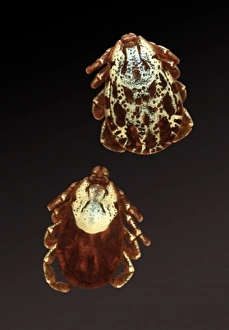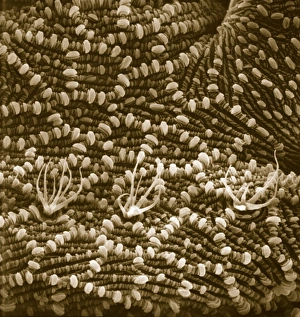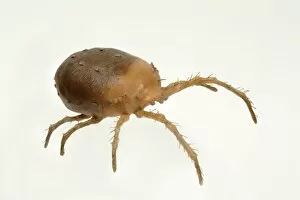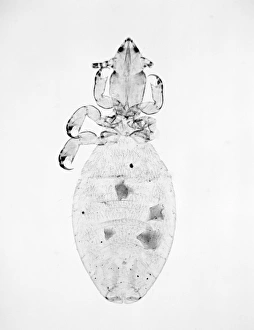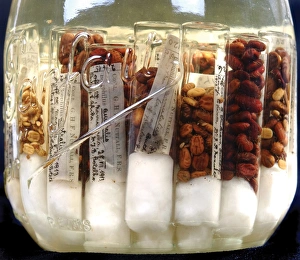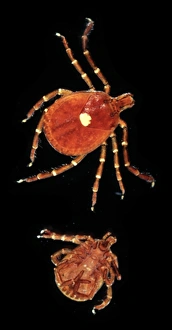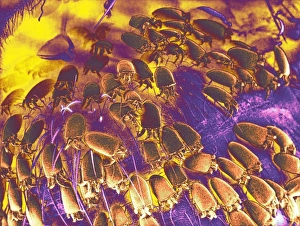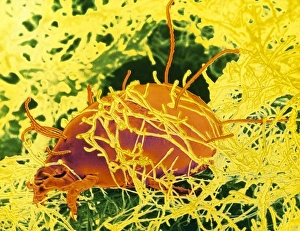Acarina Collection
Acarina, also known as the mites of the Arachnida class, encompass a diverse group of tiny creatures that can be found in various habitats worldwide
All Professionally Made to Order for Quick Shipping
Acarina, also known as the mites of the Arachnida class, encompass a diverse group of tiny creatures that can be found in various habitats worldwide. From the notorious Sarcoptes scabiei, responsible for causing scabies in humans and animals alike, to the Oligonychus ununguis or red spider mite that infests plants with its piercing mouthparts - these minuscule arachnids play significant roles in ecosystems. In Andalusia, Spain during June, one might come across the vibrant Red spider mite (Tetranychus urticae) amidst lush greenery. Its striking presence against a colourful background is a testament to nature's intricate beauty. Meanwhile, an adult female American dog tick (Dermacentor variabilis) can be observed at Morris Arboretum in Philadelphia; this tick species poses health risks to both humans and animals. Belonging to Acariformes within Acarina, these creatures have captured scientific interest due to their allergy-inducing properties. The Dermatophagoides sp. Dust mite is particularly notorious for triggering allergic reactions among sensitive individuals. Not limited to land-dwelling species alone, ticks like Ornithodoros parkeri are known carriers of diseases such as Lyme disease and Rocky Mountain spotted fever. These ectoparasites serve as reminders of the delicate balance between human-animal interactions. Interestingly enough, some mites have adapted to peculiar environments like cheese or poultry farms. Tyrophagus casei thrives on cheese while Dermanyssus gallinae finds solace among birds' feathers - showcasing their ability to adapt and survive even under challenging circumstances. Lastly, we encounter Phthiracarus sp. , commonly referred to as box mites or armadillo mites due to their unique appearance resembling miniature armored tanks. Their intriguing morphology adds another layer of fascination when exploring the world of Acarina.

